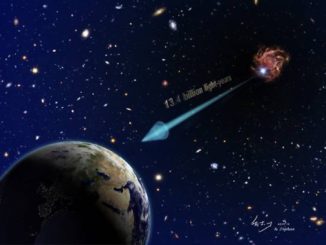
Determining where in the Milky Way a star like the sun first flared to life is a difficult challenge. Stars in the galactic disk tend to move outward over cosmic time in a phenomenon known as radial migration, which is influenced by past galactic collisions, the number of spiral arms and the size and movement of the central galactic bar.
But a team of researchers led by Ivan Minchev of the Leibniz Institute for Astrophysics Potsdam has been able to determine where stars began their migration by charting their ages and chemical compositions.
Using the HARPS high-resolution spectrograph on the 3.6-meter telescope at the European Southern Observatory’s La Silla facility in Chile, the team studied 600 nearby stars, precisely determining their ages and iron content. While stars in the sample population formed all across the galactic disk, older suns formed closer to the core.
Using the same methodology, the Sun’s age – 4.6 billion years – and iron content indicated it likely was born some 2,000 light years closer to the Milky Way’s central regions and migrated outward to its currently position.
“Once in the possession of birth radii, a wealth of invaluable information could be gained about the Milky Way’s past, even from this small number of stars with precise enough measurements available to us at this time,” said Minchev.
Co-author Friedrich Anders predicts that in the near future, “applying this method to the extremely high-quality data from the (European Space Agency’s) Gaia mission and ground-based spectroscopic surveys will allow much more exact measurements of the migration history and, thus, the Milky Way past.”



